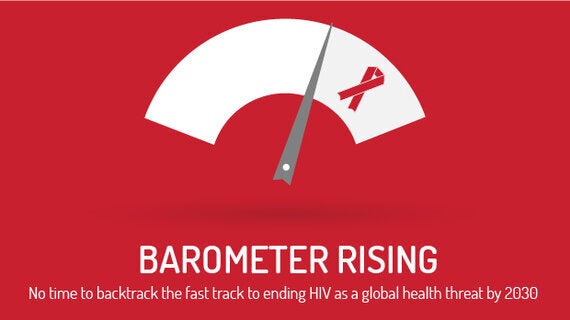

By Leah Morris
Internationally the formal commitment has been made to end AIDS by 2030. This will require hitting the ambitious 90-90-90 targets, meaning that 90 per cent of all people living with HIV will know their HIV status, 90 per cent of all people with diagnosed HIV infection will receive sustained antiretroviral therapy, and 90 per cent of all people receiving antiretroviral therapy will have viral suppression. However, there is a chasm to be crossed between the formal signature of a country acknowledging that these targets ought to be met, and the day-to-day financial, political, and social effort that meeting these targets will require.
Governments are spread thin with the many competing priorities for humanitarian aid. Due to the competing pressures of dealing with issues ranging from ocean acidification to ending hunger, there has been an instinct to cut the tapestry of the Sustainable Development Goals (SDGs) into distinct puzzle pieces. Unfortunately, in focusing our attention on defining the edges of the individual pieces we have lost sight of the picture as a whole. To achieve our goals in each of the SDGs, we must find the keystone pieces, the corner pieces if you will, to define our boundaries and understand how each of the global issues fits together.
The Sustainable Development Goals ought to be re-approached to focus on their similarities rather than their defining features.
To achieve the 90-90-90 targets, the Sustainable Development Goals ought to be re-approached to focus on their similarities rather than their defining features. For example, gender equality has been identified as a key issue. When confronting inequality for women it causes a ripple effect, improving living conditions globally. If a woman is not given an equal opportunity for education she is at higher risk of early pregnancy and sexually transmitted infections. After giving birth, or contracting a viral infection such as HIV, attending school is much more difficult. If women are uneducated, then they likely face unemployment and therefore have difficulties providing for themselves and their children leading to dependence, reinforcing the cycle.
When viewing the statistics it becomes clear that many of the SDGs are linked: if all women completed primary education, there would be 66% fewer maternal deaths. This demonstrates a correlation between education and the power to make informed choices about pregnancy. Similarly this year, almost 62 per cent of all new HIV infections among adolescents occurred among adolescent girls.
The Plan International initiative, Because I am a Girl, has used this holistic approach to ending cycles of poverty. In focusing on gender equality, the initiative recognizes its potential to benefit communities in a multifaceted way rather than diversifying and spreading thin their efforts. In narrowing the scope of global efforts to keystone issues such as gender equality, it simplifies efforts and may help to coordinate groups who work tirelessly on various world issues. The current list of 169 targets for the SDGs is simply overwhelming.
To reach the 90-90-90 targets it is clear that the background reasons for gaps in the HIV care continuum need to be determined. In focusing on fewer key issues, efforts and resources can be focused on collecting quality data crucial to developing efficacious projects and policy. For example, it is a known problem to evaluating gender equality that there is a lack of gender data, and worse, flawed or inaccurate data. Gender data should accurately reflect inequities in the situation of boys, girls, women, and men. The first target to end AIDS by 2030 is to have 90 per cent of all people living with HIV know their HIV status. If a proportion of our population is not being accurately reflected in the data, then it is easy to make flawed conclusions and inaccurate policies that will not benefit those who are currently slipping through the cracks.
To provide 90 per cent of all people with diagnosed HIV infection with sustained antiretroviral therapy, we need to ensure hospitals not only provide treatment, but also are safe for people of all genders and sexual identities. Only in providing equal access in a safe environment will 90 per cent of those receiving antiretroviral therapy be able to stick with a drug regimen and be virally suppressed.
Too often AIDS efforts address those on the surface level, people who are easy to access through standardized education programs, with governments that have funding for robust healthcare programs and pharmaceutical access. To end AIDS by 2030, the approach must go deeper than surface level. It will require addressing bigger, overarching, systemic issues. This is going to require reaching out to the most difficult, vulnerable populations that so often are left behind as the weakest link.
Considering the pledge for the SDGs is that, "no one will be left behind" focusing on better data to identify those who are currently left behind seems appropriate. The truly Herculean task of ending AIDS by 2030 is possible, but efforts need to be focused; the weakest link will break the chain. Invisible populations such as women, sex workers, inmates, LGBTQ+ persons, youth at risk, as well as people who use and inject drugs, are examples of the bottom line to achieving these targets. Eradicating the disease from the average population will not end AIDS. The first step to planning to meet the target of the SDGs is to create robust, complete data, in fewer areas that inform as many of the SDGs as possible. The second step is to identify and act on social issues that appear peripheral but directly impact the SDG goals.
Leah Morris holds a Bachelor of Arts Combined Hons. in International Development and Environment, Sustainability and Society from Dalhousie University/The University of King's College as of October, 2015. As an undergraduate Ms. Morris was published in the Underg(rad) Journal by NSPIRG (2015), Halifax, NS.
This blog is part of the blog series: Barometer Rising: No time to backtrack the fast track to ending HIV as a global health threat by 2030 by the Interagency Coalition on AIDS and Development (ICAD) in recognition of World AIDS Day (1 December). The series features a selection of blogs written by our member and partner organizations. Contributors share their broad range of perspectives and insight on what they think needs to be done to strengthen our HIV prevention efforts at home and abroad in order for the world to meet the ambitious target of ending AIDS as an epidemic by 2030.
Disclaimer: The views and opinions expressed in this blog series are those of the authors and do not necessarily reflect those of ICAD.
Follow HuffPost Canada Blogs on Facebook